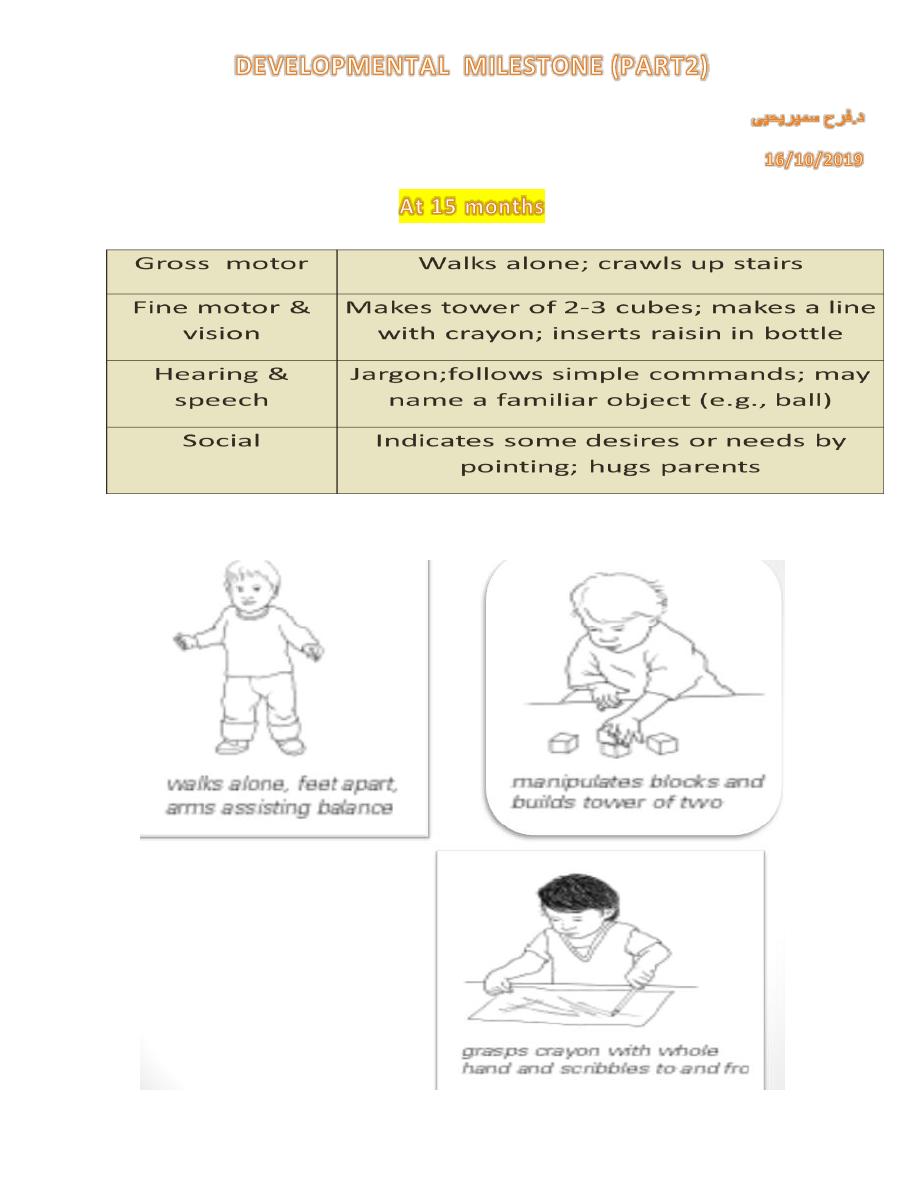
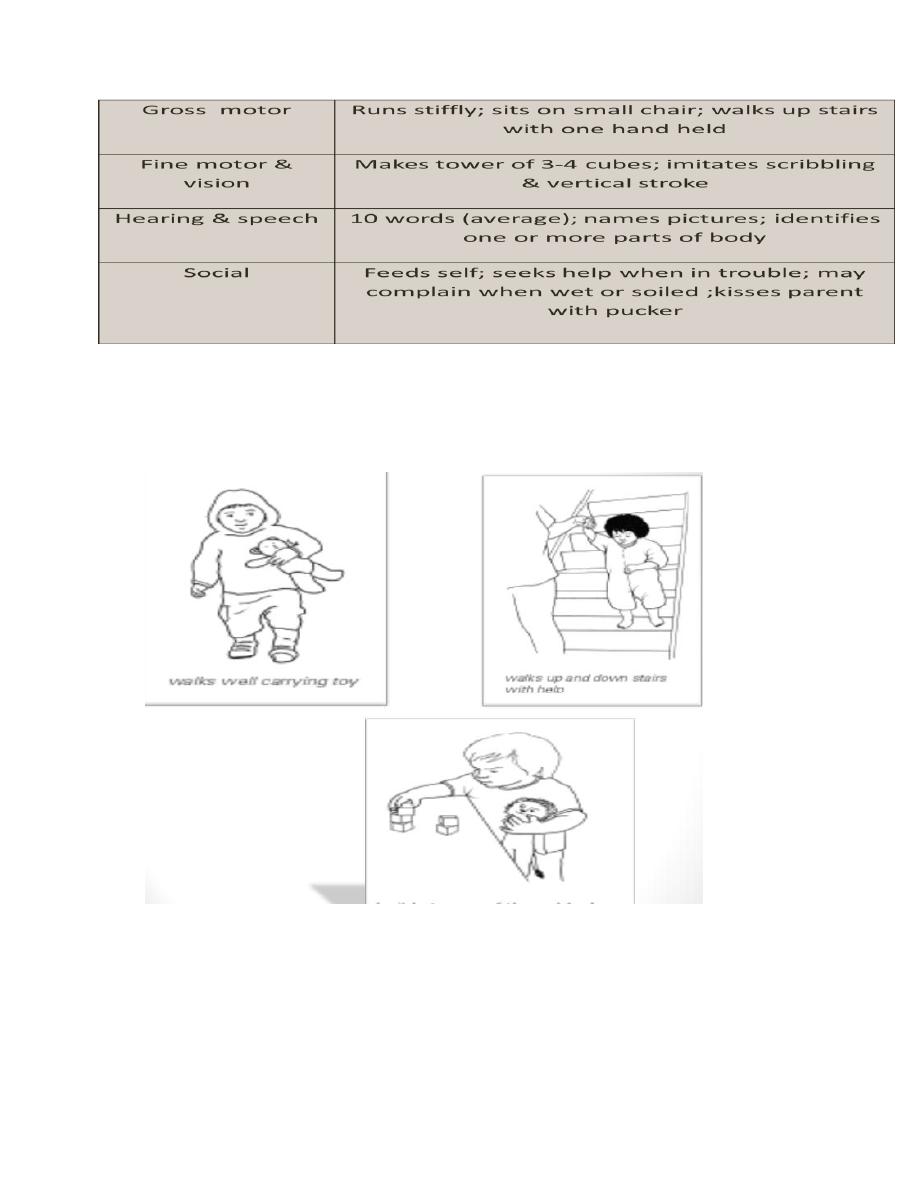
At 18 months
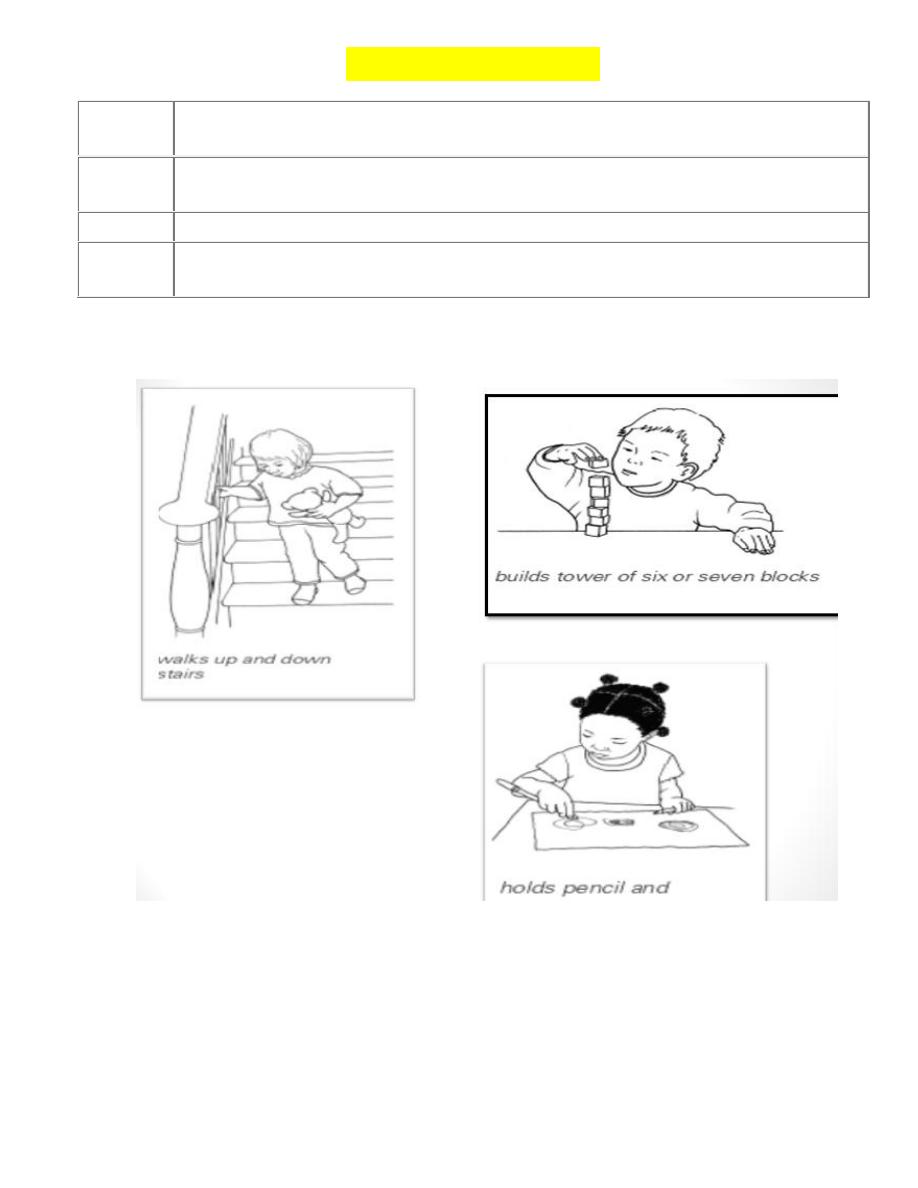
At 2 years (24 months)
Motor:
Runs well, walks up and down stairs, one step at a time; opens doors; climbs on
furniture; jumps
Adaptive:
Makes tower of 7 cubes (6 at 21 mo); scribbles in circular pattern; imitates
horizontal stroke; folds paper once imitatively
Language: Puts 3 words together (subject, verb, object)
Social:
Handles spoon well; often tells about immediate experiences; helps to undress;
listens to stories when shown pictures
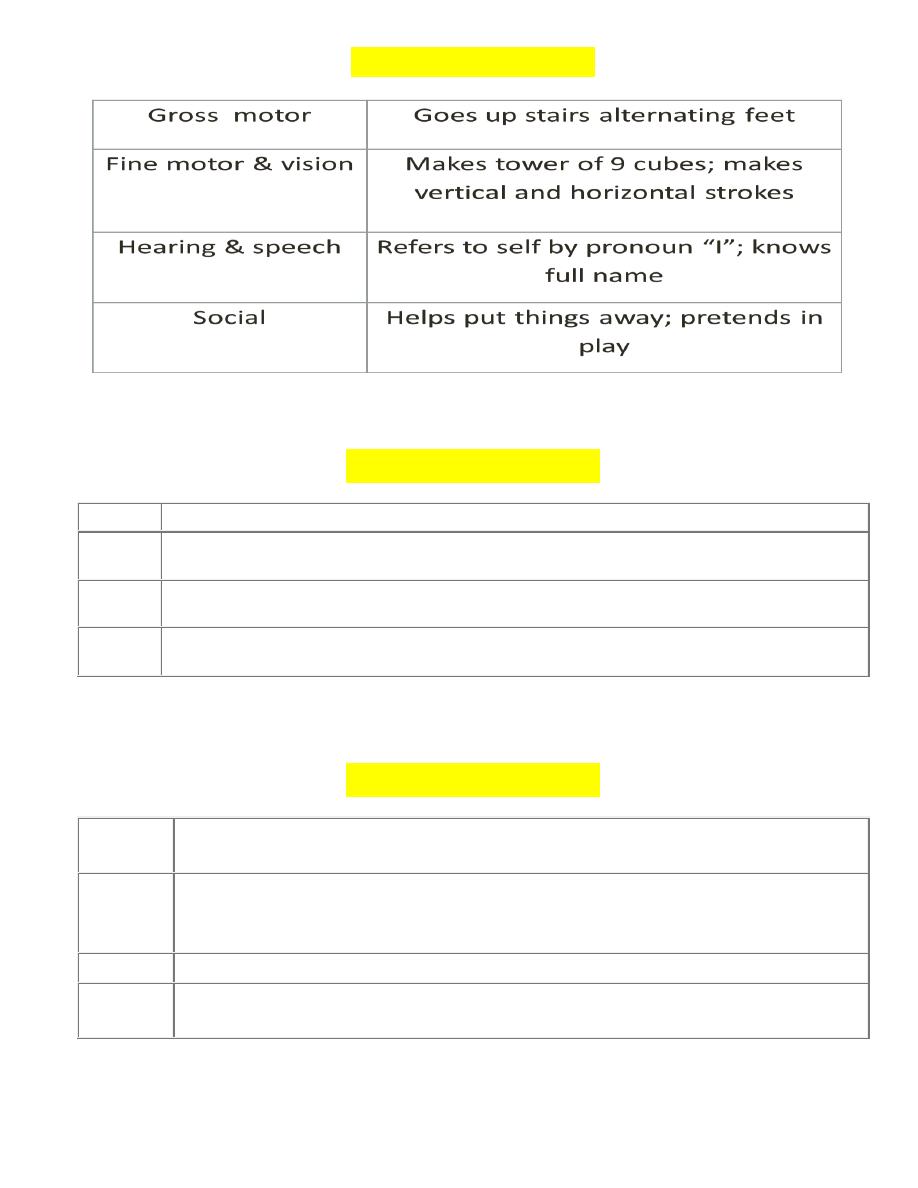
At 2.5 years (30 months)
At 3 years (36 months)
Motor:
Rides tricycle; stands momentarily on one foot
Adaptive:
Makes tower of 10 cubes; imitates construction of “bridge” of 3 cubes; copies circle; imitates
cross
Language:
Knows age and sex; counts 3 objects correctly; repeats 3 numbers or a sentence of 6 syllables;
most of speech intelligible to strangers
Social:
Plays simple games (in “parallel” with other children); helps in dressing (unbuttons clothing and
puts on shoes); washes hands
At 4 years (48 months)
Motor:
Hops on one foot; throws ball overhand; uses scissors to cut out pictures; climbs
well
Adaptive:
Copies bridge from model; imitates construction of “gate” of 5 cubes; copies
cross and square; draws man with 2 to 4 parts besides head; identifies longer of 2
lines
Language: Counts 4 pennies accurately; tells story
Social:
Plays with several children, with beginning of social interaction and role-playing;
goes to toilet alone
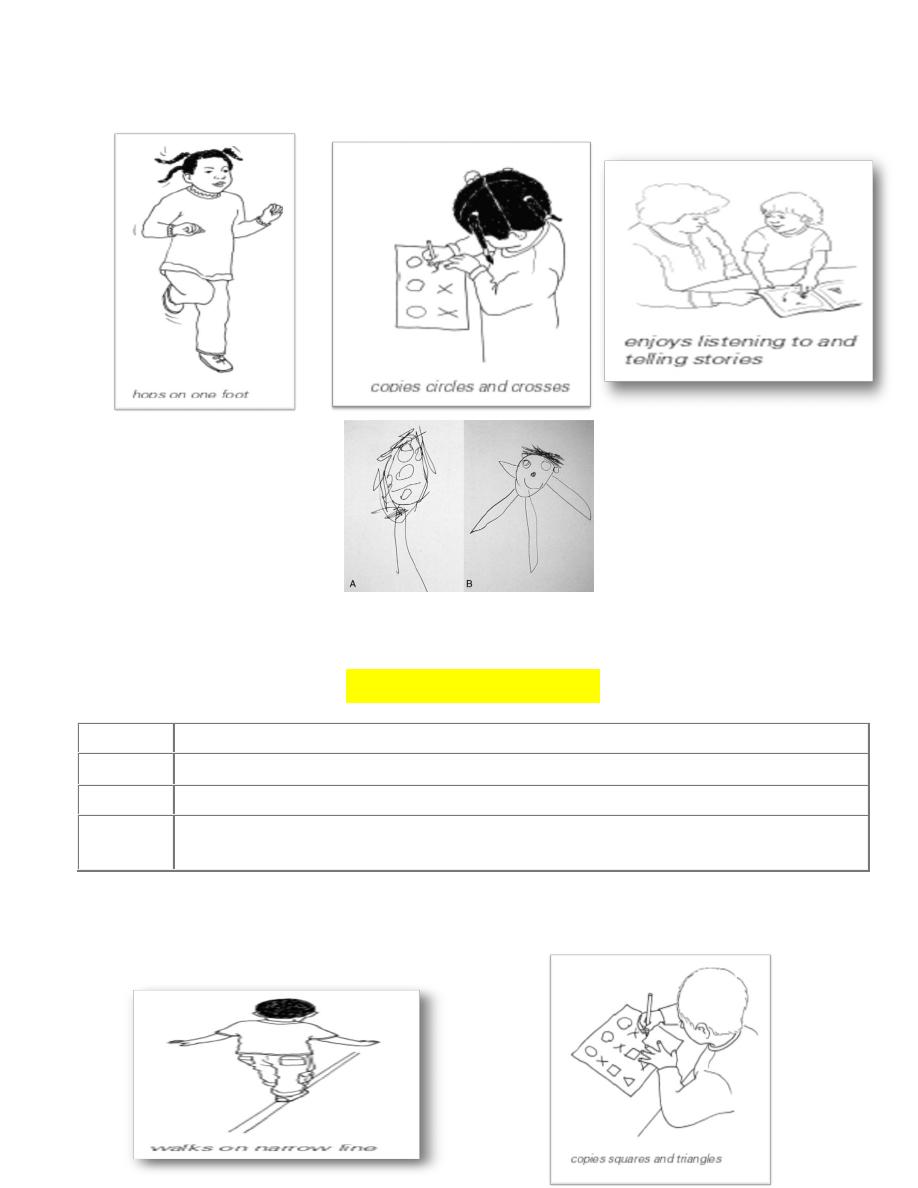
At 5 years (60 months)
Motor:
Skips
Adaptive: Draws triangle from copy; names heavier of 2 weights
Language: Names 4 colors; repeats sentence of 10 syllables; counts 10 pennies correctly
Social:
Dresses and undresses; asks questions about meaning of words; engages in
domestic role-playing
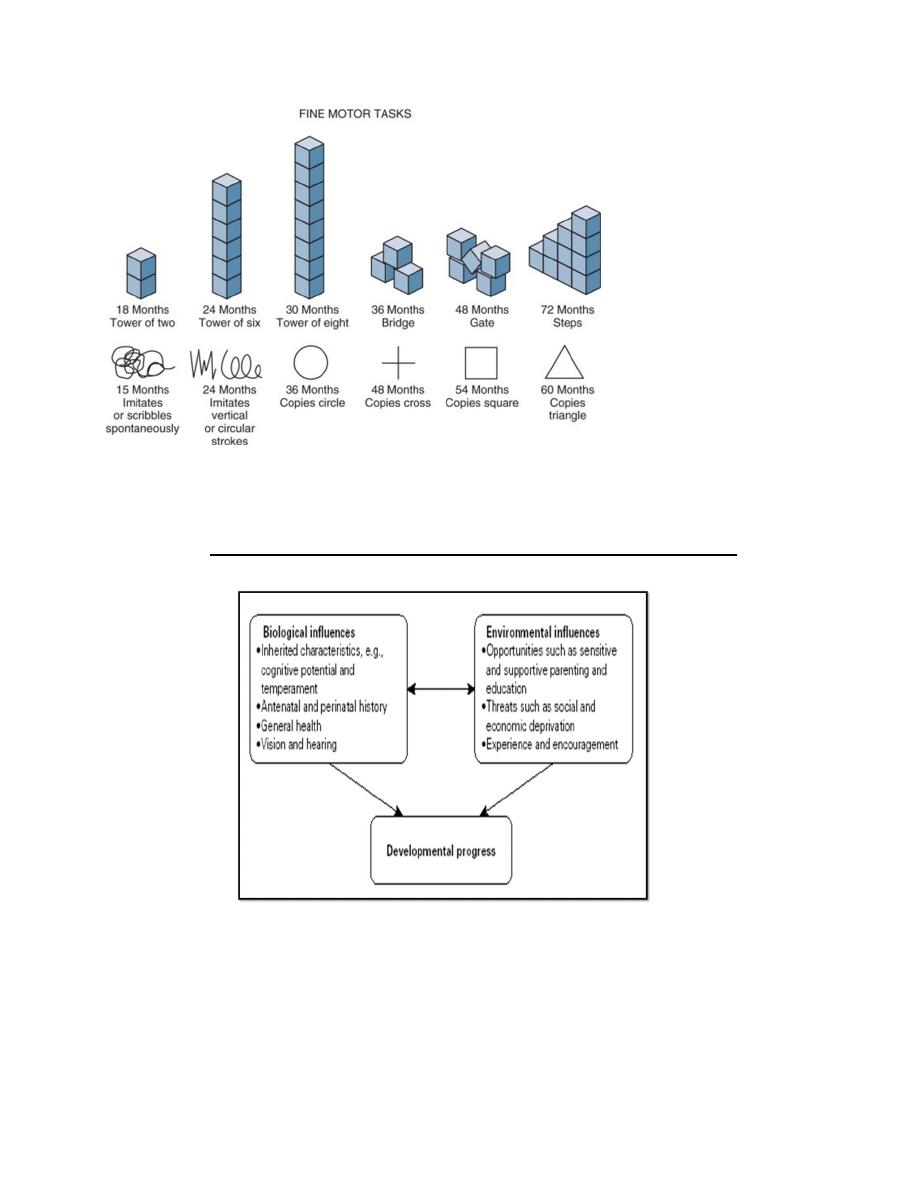
In assessing the development of children older than 5 yr till the age of puberty is by evaluating school performance
in age-appropriate class.
Developmental disorders Influences on development
Developmental disorders generally present with
:
Qualitative abnormality: poor awareness of task and context, slowness in completing a task, poor social
interest.
Disordered developmental sequence: e.g. infant who is easier to stand than sit, language expression better
than understanding, hyperlexia (advanced reading) coexisting with poor Language.
Severely delayed rate of development: e.g., not sitting by 10 months, not walking by 18 months or no single
words by 18 months;
Regression of development:
losing previously acquired skill as in neurodegenerative disorders.
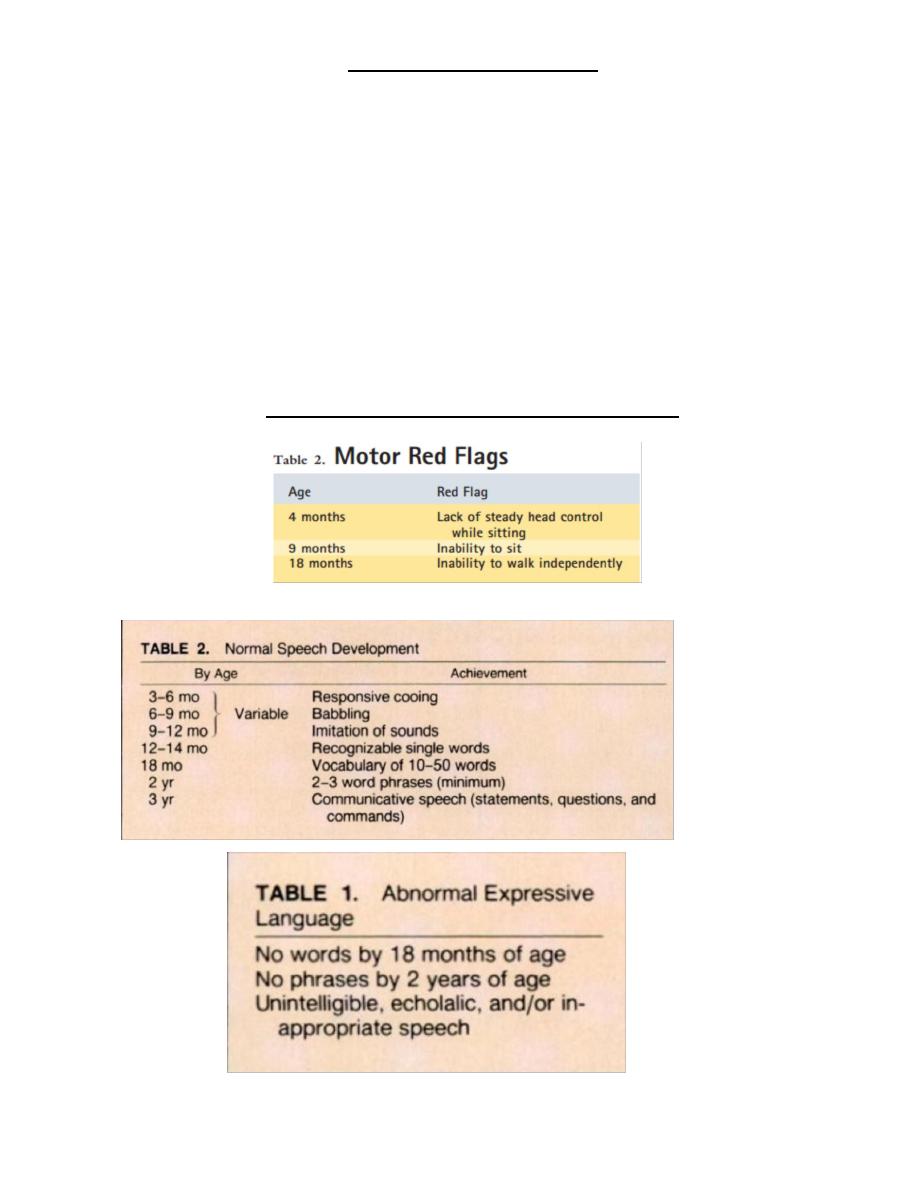
Global developmental delay
Global developmental delay simply means delay in two or more areas of development. Many children presenting
with global developmental delay are subsequently found to have significant learning difficulties (previously termed
‘mental retardation’).
Where the cause is environmental/social or secondary to ill health, children may ‘catch up’ with time and
appropriate input/stimulation.
Possible causes of global developmental delay include:
• Environmental/psychosocial issues: lack of experience, deprivation, poor parenting, ill health
• Any condition causing learning difficulties, such as chromosomal disorders or syndromes
Red flags (alarming signs) in development
.
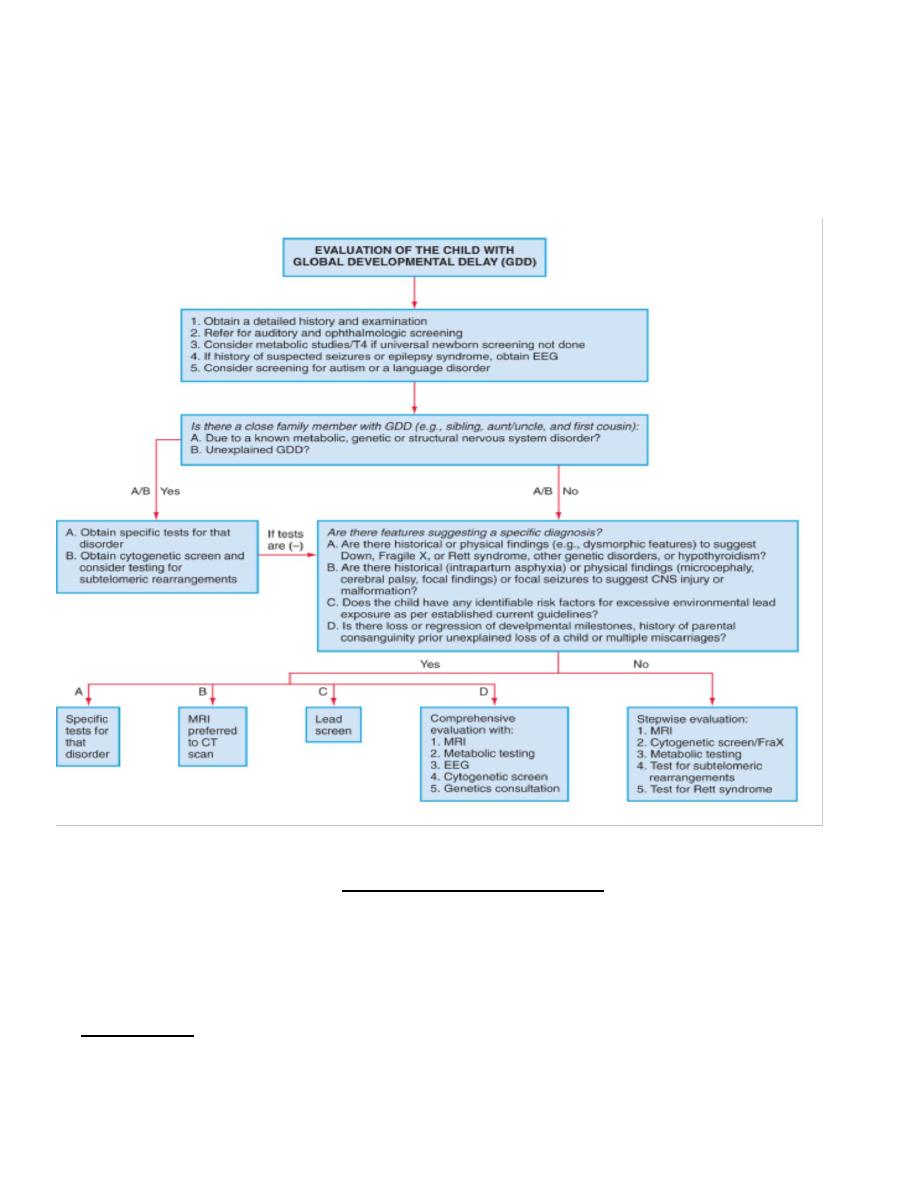
Social-Emotional Red Flags
Lack of smiles or other joyful expressions by 6 months
Failure to respond to name when called by 12 months
Lack of simple pretend play ,Lack of spoken language/gesture combinations by 18 months off age
Adolescence & Puberty
Adolescence: is the passage from childhood to adulthood.
Puberty: changes that lead to reproductive capacity
Adolescence
Between 10 and 20 yr of age, young people undergo rapid changes in body structure and physiologic, psychologic,
and social functioning.Hormones set this developmental agenda together with social structures designed to foster
the transition from childhood to adulthood.
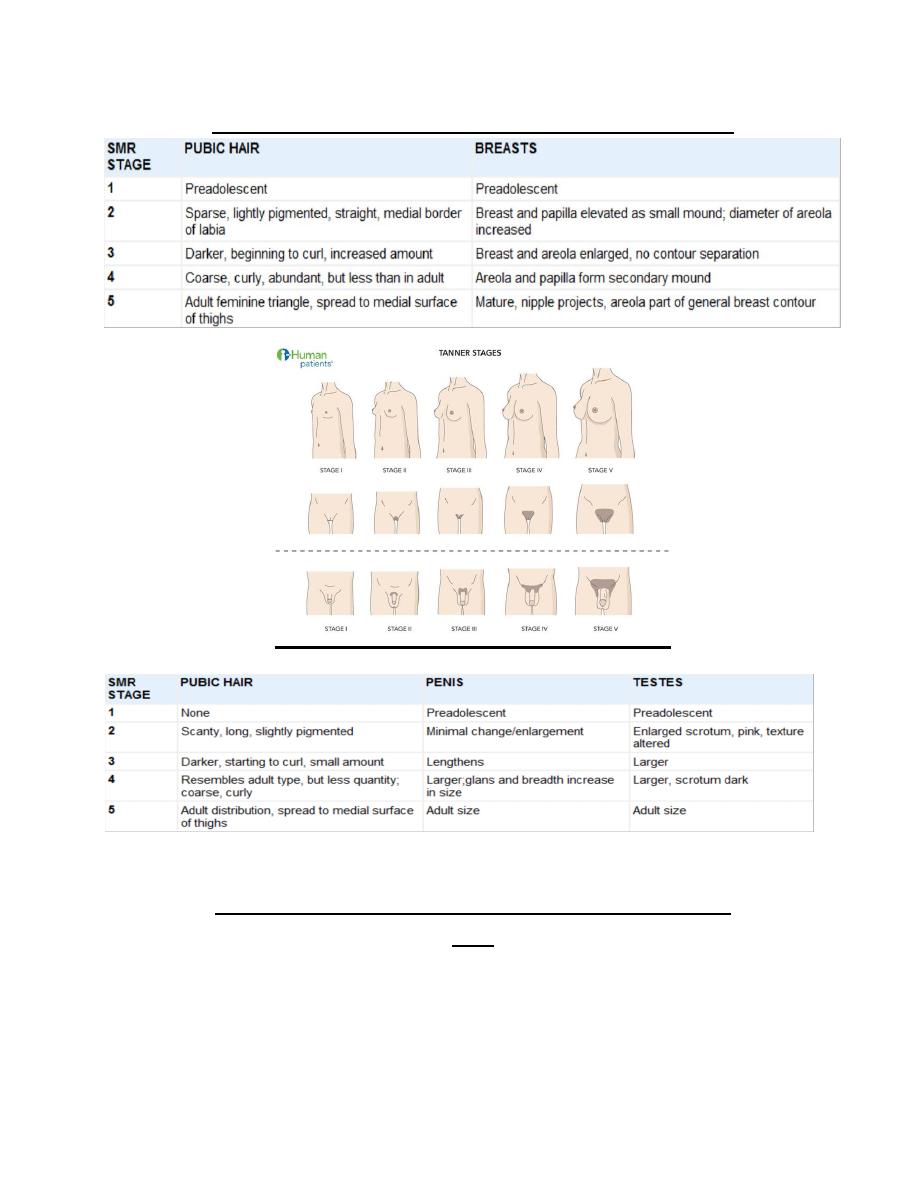
Adolescence proceeds across three distinct periods—early, middle, and late—each marked by a characteristic set of
salient biologic, psychologic, and social issues.
Classification of Sex Maturity States in Girls (Tanner stage)
PHYSICAL GROWTH ANDDEVELOPMENT OF ADOLESCENTS
Girls
Breast budding under the areola (thelarche) and pubertal fine straight pubic hair over the mons pubis
(adrenarche or pubarche) are early pubertal changes occurring around 11 years of age (range 8 to 13
years) . These changes mark the sexual maturity rating (SMR), or Tanner stage, II of pubertal development
Completion of the Tanner stages should take approximately 4 to 5 years. The peak growth spurt usually
occurs approximately 1 year after thelarche at SMR stage III to IV breast development and before the
onset of menstruation (menarche). Menarche is a relatively late pubertal event. Females grow only 2 to 5
cm in height after menarche .

The mean ages of thelarche and adrenarche are approximately 9 and 10 years for African-American and
white girls, respectively.The mean ages of menarche are 12.2 and 12.9 years for African-American and
white girls, respectively.The interval from the initiation of thelarche to the onset of mens es (menarche) is
2.3 ± 1 years.
Boys
Testicular enlargement (≥2.5 cm) corresponds to sexual maturity rating, or Tanner, stage I to II .Testicular
enlargement is followed by pubic hair development at the base of the penis (adrenarche) and then axillary
hair within the year.
The growth spurt is a relatively late event; it can occur from 10.5 years of age to 16 years of age.
Deepening of the voice, facial hair, and acne indicate the early stages of puberty.
Sexual precocity (precocious puberty) is classically defined as secondary
sexual development occurring before the age of 9 years in boys or 8 years in
girls
